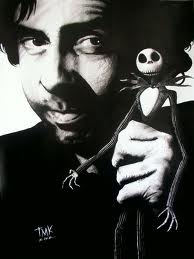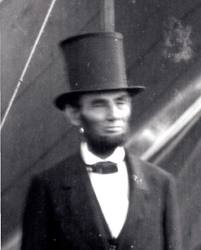Social Media for Business Leaders
 As a marketing guy, I understand (sort of) the marketing aspects of social media. If you can start a conversation — and keep it interesting — you can engage your market in ways that are impossible with “interruption marketing”. You can exchange ideas, gather suggestions, support charities, and engage in positive social activities. Along the way, you can mention your products. You offer something of interest (or utility) and the products tag along for the ride.
As a marketing guy, I understand (sort of) the marketing aspects of social media. If you can start a conversation — and keep it interesting — you can engage your market in ways that are impossible with “interruption marketing”. You can exchange ideas, gather suggestions, support charities, and engage in positive social activities. Along the way, you can mention your products. You offer something of interest (or utility) and the products tag along for the ride.
But social media is not just about marketing. Executives should be able to use social media to enhance both internal and external communication. Yet, I haven’t found many examples in the literature. Fortunately, McKinsey just published an interesting case study based on GE’s experience. The authors, who are GE leaders themselves, point out that GE is not a “digital native” and its experiences may, therefore, be relevant to a wide range of organizations. They then outline six social media skills that all leaders need to learn. The first three are personal; the last three are strategic or organizational.
Producer — creating compelling content. Digital video tools are now widely available and easy to use. Even busy senior executives can weave them into their communications. As compared to traditional top-down communications, the emphasis shifts from high production quality to authenticity. The goal is to invite participation and collaboration. Speaking plainly and telling stories in an authentic voice invites participation much better than a highly produced video.
Distributor — leveraging dissemination dynamics. Instead of sending a message and expecting it be consumed, you now send a message and expect it to be mashed up. A successful social message will be picked up by people at all levels of the organization, commented on, “recontextualized”, and forwarded along. You want this to happen which means giving up a significant amount of control — not always an easy concept for executives. You also want to build up a followership within the organization long before you need it.
Recipient — managing communication overflow. We’re already drowning in information. Why take on social media? Because it’s more credible than top-down media. By learning to use filters effectively, you can also use social media to manage the flow of information to and from your desk. You should practice when and how to respond to postings and tweets. You don’t need to respond frequently but you do need to respond thoughtfully.
Advisor and orchestrator — driving strategic social media utilization. Fundamentally, executives need to promote the use of social media and guide it to maturity. Your company may be enthusiastic but inexperienced. Or you may have leaders who wish to avoid it altogether. A good leader can harness the enthusiasm of “digital natives” and even use them as “reverse mentors” to build capabilities within the organization.
Architect — creating an enabling organizational infrastructure. On the one hand, you want to encourage collaboration and free exchange. On the other hand, you need some rules. It helps if you have well-established values of integrity, collaboration, and transparency. If your company hasn’t established these values, it’s time to get started. Social media will arise in your organization whether you’re ready or not.
Analyst — staying ahead of the curve. As your organization masters social media, something new will emerge. Perhaps, it’s the Internet of Things. As I’ve noted before, this could help us reduce health care costs. It could also have huge implications for your organization — both good and bad. Better stay awake.
And what do you get if your company’s leaders master these skills? The authors say it best: “We are convinced that organizations that … master … organizational media literacy will have a brighter future. They will be more creative, innovative, and agile. They will attract and retain better talent, as well as tap deeper into the capabilities and ideas of their employees and stakeholders.”
A Joke About Your Mind’s Eye
Here’s a cute little joke:
The receptionist at the doctor’s office goes running down the hallway and says, “Doctor, Doctor, there’s an invisible man in the waiting room.” The Doctor considers this information for a moment, pauses, and then says, “Tell him I can’t see him”.
It’s a cute play on a situation we’ve all faced at one time or another. We need to see a doctor but we don’t have an appointment and the doc just has no time to see us. We know how it feels. That’s part of the reason the joke is funny.
Now let’s talk about the movie playing in your head. Whenever we hear or read a story, we create a little movie in our heads to illustrate it. This is one of the reasons I like to read novels — I get to invent the pictures. I “know” what the scene should look like. When I read a line of dialogue, I imagine how the character would “sell” the line. The novel’s descriptions stimulate my internal movie-making machinery. (I often wonder what the interior movies of movie directors look like. Do Tim Burton’s internal movies look like his external movies? Wow.)
We create our internal movies without much thought. They’re good examples of our System 1 at work. The pictures arise based on our experiences and habits. We don’t inspect them for accuracy — that would be a System 2 task. (For more on our two thinking systems, click here). Though we don’t think much about the pictures, we may take action on them. If our pictures are inaccurate, our decisions are likely to be erroneous. Our internal movies could get us in trouble.
Consider the joke … and be honest. In the movie in your head, did you see the receptionist as a woman and the doctor as a man? Now go back and re-read the joke. I was careful not to give any gender clues. If you saw the receptionist as a woman and the doctor as a man (or vice-versa), it’s because of what you believe, not because of what I said. You’re reading into the situation and your interpretation may just be erroneous. Yet again, your System 1 is leading you astray.
What does this have to do with business? I’m convinced that many of our disagreements and misunderstandings in the business world stem from our pictures. Your pictures are different from mine. Diversity in an organization promotes innovation. But it also promotes what we might call “differential picture syndrome”.
So what to do? Simple. Ask people about the pictures in their heads. When you hear the term strategic reorganization, what pictures do you see in your mind’s eye? When you hear team-building exercise, what movie plays in your head? It’s a fairly simple and effective way to understand our conceptual differences and find common definitions for the terms we use. It’s simple. Just go to the movies together.
Strategy: Who’s Number 2?
The CEO is clearly the most important executive when it comes to creating and implementing organizational strategy. Who’s the second most important executive for strategy?
The standard answer is probably the Chief Operation Officer — especially in terms of carrying out the strategy. But I’m starting to think that the COO is only the third or fourth most important strategic officer. So, who’s number 2? I’m leaning towards the head of Human Resources. Let’s call him or her the Chief Human Resources Officer or CHRO.
I’m leaning toward the CHRO because I’ve always believed that the soft stuff is hard. It’s not easy to get your culture right or to motivate employees for the long haul. It is all too easy to get your strategy crosswise with your culture. As I’ve noted before , when it’s culture versus strategy, culture always wins.
Similarly, I’ve never seen a company falter because they couldn’t find enough “numbers guys”. Our B-schools just keep churning them out. On the other hand, I have seen companies falter because they couldn’t find good communicators and motivators. Understanding human behavior is much more difficult than understanding the numbers. While we can teach people the “soft arts,” it doesn’t seem to be a popular specialty at university.
What’s really pushing me toward the CHRO as strategy leader is Scott Keller and Colin Price’s book, Beyond Performance: How Great Organizations Build Ultimate Competitive Advantage. (Click here for the book or here for a white paper). Keller and Price argue that too many companies pay close attention to performance (“the numbers”) but not nearly enough attention to organizational health. Their “…central message is that focusing on organizational health — the ability of your organization to align, execute, and renew itself faster than the competition — is just as important as focusing on the traditional drivers of business performance.” This has everything to do with the “people-oriented aspects of leading an organization.” In my mind, that means the CHRO better be intimately involved.
Keller and Price present a lot of statistical evidence to buttress their case. (They are McKinsey guys, after all). There is a distinct correlation between organizational health and organizational performance. They also present five “frames” for viewing both health and performance during transformation change: 1) Aspire; 2) Assess; 3) Architect; 4) Act; 5) Advance. I’ll write more about these in the future but the bottom line is that you need to use these frames to view both performance and health to develop a sustainable, high performance organization.
While I think the CRHO could and should be a strategy leader, in my experience, it doesn’t happen very often. I’ve seen HR organizations launch very interesting programs but, too often, the programs exist in their own right rather than as strategic enablers. They don’t impede the strategy but they don’t help it either. I also see the numbers guys set the strategy and then turn to the CHRO and say, in effect, “OK, here’s the strategy, now get us the people we need.” (In technology, this happens to CIOs all the time). To be effective, the CHRO really needs to be at the strategy table.
Why wouldn’t the CHRO be invited to the strategy table? Perhaps because they understand the soft stuff but not the business. I’ve seen CHROs (and CIOs) make naive comments in strategy meetings, showing that they clearly don’t understand the business. The result is a bunch of numbers guys rolling their eyeballs and looking vaguely embarrassed. Numbers guys need to learn more about the soft stuff. By the same token, CHROs (and their staffs) need to learn more about the performance side of the business. Perhaps then, they can truly become strategy leaders.
Little Life Lessons from Lincoln
On July 4, 1863, Robert E. Lee was leading a Confederate army in retreat from Gettysburg when they were trapped against the rain-swollen Potomac River. The Union army, commanded by General George Meade, pursued the rebels. Abraham Lincoln ordered Meade to attack immediately. Instead, Meade dithered, the weather cleared, the river shrank, and Lee and his army escaped. Lincoln was furious and penned this letter to Meade:
I do not believe you appreciate the magnitude of the misfortune involved in Lee’s escape. He was within our easy grasp, and to have closed upon him would, in connection with our other late successes, have ended the war. As it is, the war will be prolonged indefinitely. If you could not safely attack Lee last Monday, how can you possibly do so south of the river, when you can take with you very few— no more than two-thirds of the force you then had in hand? It would be unreasonable to expect and I do not expect that you can now effect much. Your golden opportunity is gone, and I am distressed immeasurably because of it.
Interestingly, Lincoln never sent the letter — it was found among his papers after his death. Lincoln generally praised his colleagues for their positive accomplishments and said little or nothing about their failures. Apparently, he wrote letters like the one to Meade to relieve his own frustrations — and perhaps to leave a record for history — rather than to humiliate his colleagues and create public acrimony.
As Douglas Wilson, a Lincoln scholar, pointed out in a recent article (click here), Lincoln was great communicator but not necessarily in the way we think. Some tidbits on how he worked:
- He rarely spoke in public and when he did he was very well prepared. We think of the Gettysburg Address and the Second Inaugural speech as great feats of oratory — and they were. But there weren’t many such feats; he gave relatively few speeches. And he almost never spoke off the cuff. He knew that people followed his words closely and he prepared meticulously. His speeches were extraordinary. Equally extraordinary is the fact that he almost never said anything stupid that he had to retract. Our politicians and executives today could learn a lot from him.
- He pre-wrote his speeches. Lincoln always had scraps of paper with him — which he often stored in his hat. When an idea — or an elegant way to phrase an idea — came to him, he jotted it down. He didn’t start thinking about his speeches when a deadline drew near. He was thinking about them virtually all the time.
- He was mercifully brief. The Gettysburg Address consisted of 267 words. By contrast, this post has about 600. Which one do you think will live longer?
- He cultivated the press before he needed them. In general, Lincoln got to know his audience before he spoke to them. He gave favors to journalists before he asked for favors in return. Getting to know your audience and letting them know that you genuinely care about them are always good strategies.
- He understood event jujitsu. The Civil War began with the crisis at Fort Sumter in Charleston harbor. Lincoln could have sent in a fleet to shoot up the Confederate fortifications. Instead, he sent in a small re-supply mission. When the Confederates sought to block the mission, they fired the first shots of the war. It’s a small leap to conclude that the Confederates “started” the war. Thus, a small incident became a major victory in the battle to shape perceptions.
Lincoln has always been one of my favorite presidents and I certainly enjoyed the recent movie from Steven Spielberg. Lincoln communicated effectively and was an expert at shaping public opinion. As the movie showed, he was also adept at cutting deals and rolling logs to achieve his greater goals. Not bad for a kid from the prairies.
Where Does Credibility Come From?
According to the Greeks, a persuasive presentation consists of three major elements:
- Ethos (trust) — first you need to establish that you are a trustworthy person. (Click here for more).
- Logos (logic) — once you’re perceived as trustworthy (and only then), you can deliver the logic of your argument. (Click here).
- Pathos (emotion) — to sum up, you need to touch on the audience’s emotions. Why is your recommendation good for them? (Click here).
I’ve always wondered, how do you quickly establish that you’re a trustworthy person? It’s not easy to project trustworthiness to an audience. Credibility is certainly a key ingredient — but that just begs the question, how do you project credibility?
Then I re-read Jay Conger’s article (click here) and discovered that credibility comes from two sources: experience and relationships.
I intuitively understood the experience part. Whenever I speak to an audience, I briefly introduce the relevant details of my experience. I try not to overdo it as I don’t want to come across as arrogant or academic. I find that a little self-deprecation can help. This is typically a variant on, “I know a lot about the topic because I’ve made a lot of mistakes….” Ultimately, however, I want the audience to know that I have been successful. To do this, I often find it helpful to have someone else introduce me. They can brag about me in ways that I can’t.
Conger points out that credibility also includes open-mindedness. Persuasive people are often perceived as good listeners as well as good speakers. They can incorporate what their audience has to say and adjust their positions. This is the relationship aspect of credibility. People who are honest, even-keeled, and who “generously share credit” are perceived as more credible and trustworthy.
But what if your audience doesn’t know that you are honest, even-keeled, and appreciative? What if you’re speaking to the audience for the first time? I find it’s very useful to interview members of the audience before I give a presentation. Then I can discuss my experiences and what I’ve learned. I’m more credible simply because I listened before speaking.
I also like to speak to the audience’s customers before a presentation. Because I’m an outsider, I can ask “dumb” questions of customers. This often produces interesting, even unique, insights that I can pass on to the audience. That demonstrates that I’m open to interesting sources of information and that I have some interesting perspectives to share. That makes me more credible and more persuasive.
Before you approach an audience, think about how you’ll build your credibility and trustworthiness. If you establish that you’re trustworthy early in the presentation, you may well succeed. If you can’t establish your credibility, the rest of your presentation is just wasted time.



